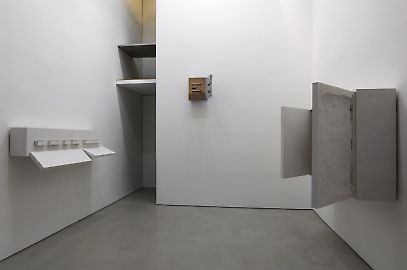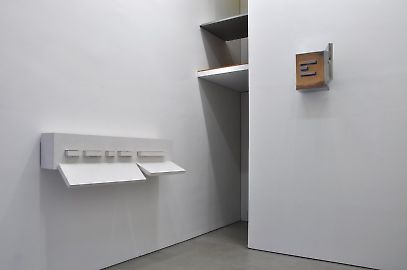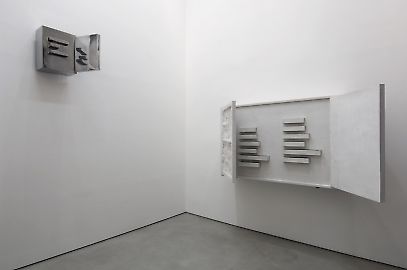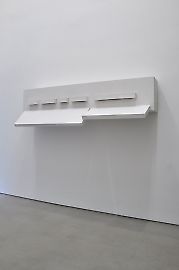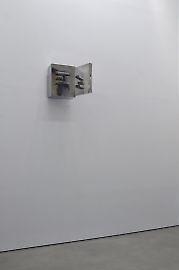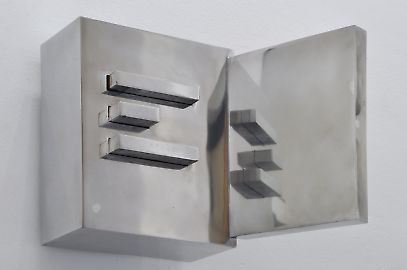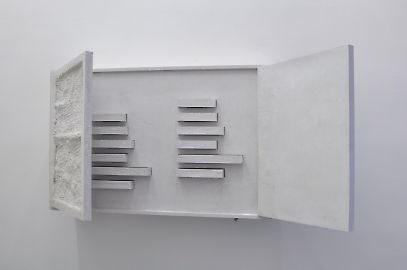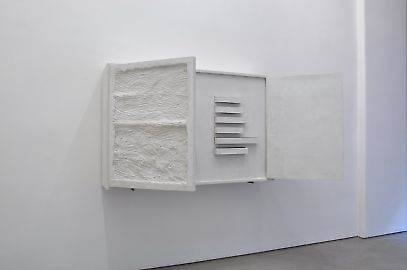Harald Klingelhöller --
Since the mid-1980s, Harald Klingelhöller (born in 1954) has placed the link between sculpture and language at the center of his work. The often metaphoric/poetic linguistic constructions that preceded his sculptural work are often more than just the titles of the respective work and are tied in with sculptures that vary widely in terms of form. Corresponding to the fundamental openness of linguistic systems, Klingelhöller understands his sculptures not as final positions, but as versions of the combination of linguistic expression and sculptural form equal in status. The sculptures are not preceded by any preparatory drawings or sketches; instead the forms are developed step by step working with the object itself.
The artist’s goal is to create a UNS, which in principle is an open space of resonance between the sculpture, the surrounding architectural framework, and the beholder, where the meanings of his works can constantly change and be renegotiated.
After a group exhibition at Georg Kargl Fine Arts in 2003 with Franz Ackermann, Meuser, and Andreas Slominski, Harald Klingelhöller’s new works are now being presented at Georg Kargl BOX.
Since 2005, he has been making his so-called Schrankversionen (Cabinet Versions), where the determination of the formal shape by the chosen language form is for the first time directly presented to the beholder. The measurements and arrangements of the individual drawers refer to the length of the individual words that give the work their title. The relationship between word and visualization is exactly, and yet completely abstract.
If Klingelhöller’s texts seem to provide a frame of reference for the interpretation of his sculptures, language and object are never in a relationship of competition. Instead, Klingelhöller reflects in his work on the fragmentary and unpredictable relationship between the written and the spoken word and its relationship to a parallel existing world of objects. In their combination, an associative and interpretative space of action opens that points to the autonomy of a work but without immediately closing itself to discourse and its possible meaning.


